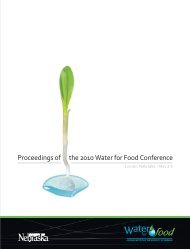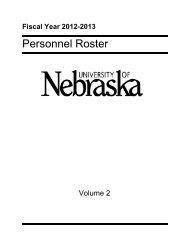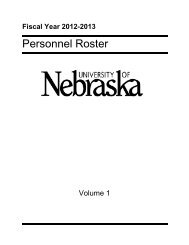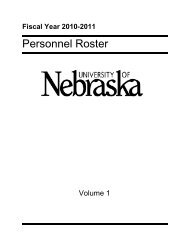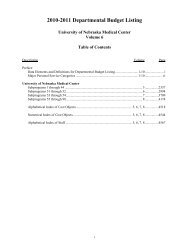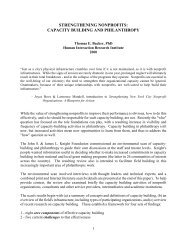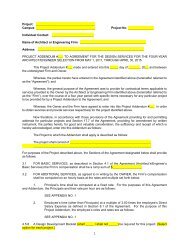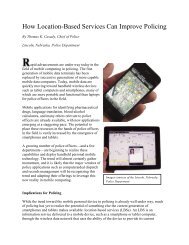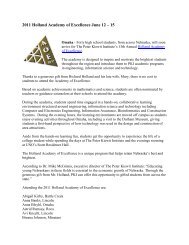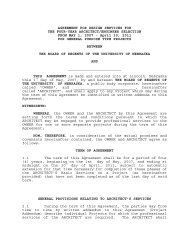Facilities Development Plan - The University of Nebraska Kearney
Facilities Development Plan - The University of Nebraska Kearney
Facilities Development Plan - The University of Nebraska Kearney
Create successful ePaper yourself
Turn your PDF publications into a flip-book with our unique Google optimized e-Paper software.
<strong>Facilities</strong> <strong>Development</strong> <strong>Plan</strong><br />
CHAPTER 4: Data Analysis<br />
& Assumptions<br />
This <strong>Facilities</strong> <strong>Development</strong> <strong>Plan</strong> takes<br />
into account a variety <strong>of</strong> data relevant to<br />
judgments about future needs. <strong>The</strong>se data<br />
sets include student headcount enrollment,<br />
trends in staffi ng, housing, classroom<br />
utilization, recreation area usage, parking and<br />
traffi c, land and building space, and utilities<br />
capacity. Projected increases in enrollment,<br />
advancement in undergraduate research, and<br />
growth in faculty and staff were considered to<br />
estimate future needs.<br />
Beyond any imperatives associated with<br />
growth in activity, the <strong>Facilities</strong> <strong>Development</strong><br />
<strong>Plan</strong> also addresses many needs to remedy<br />
long-standing condition defi ciencies and other<br />
qualitative shortcomings in key facilities.<br />
Figure 1<br />
Number <strong>of</strong> Graduates<br />
23,500<br />
23,000<br />
22,500<br />
22,000<br />
21,500<br />
21,000<br />
20,500<br />
20,000<br />
24<br />
Enrollment Trends<br />
<strong>Nebraska</strong> High School Graduates<br />
2006 - 2015<br />
Enrollment trends at UNK show a gradual<br />
increase in student headcount enrollment<br />
since 2001. This differs from the trend in the<br />
late 1990’s, which saw substantial headcount<br />
declines. Factors which contributed to<br />
the 1990’s declines will continue to affect<br />
enrollment results over the next decade. <strong>The</strong>se<br />
include declines in the <strong>Nebraska</strong> high school<br />
graduate population (particularly acute in<br />
Outstate <strong>Nebraska</strong>), more rigorous admission<br />
requirements, increasing tuition rates and<br />
increasing competition from community<br />
colleges.<br />
<strong>The</strong> table below shows the high school<br />
graduate trend since 2001 and projected<br />
through 2015:<br />
2001 2002 2003 2004 2005 2006 2007 2008 2009 2010 2011 2012 2013 2014 2015<br />
Graduation Year<br />
Actual Projected<br />
CHAPTER 4



